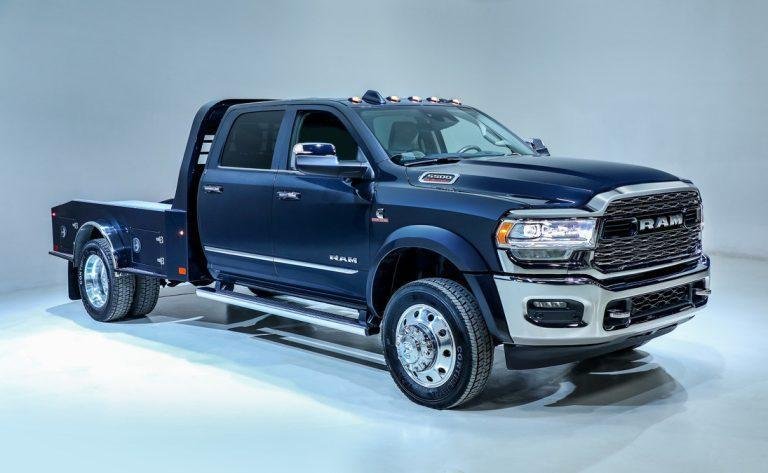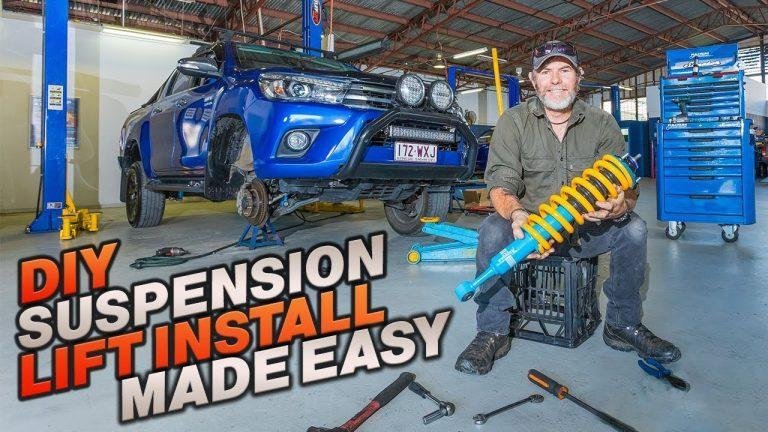Yes, 4 post lifts need to be bolted down for stability and safety reasons. 4 post lifts are heavy equipment used for lifting vehicles in auto repair shops or garages.
They require a sturdy foundation and secure bolting to ensure stability and prevent accidents during operation. Bolted down properly, these lifts can safely support the weight of vehicles and provide a stable platform for maintenance and repairs. By securely bolting them down, the risk of accidents or damage to the lift, the vehicle, or the surrounding area is minimized, providing a safer and more efficient work environment for technicians.

Credit: www.amazon.com
Understanding The Safety Considerations
4-post lifts provide enhanced safety and stability, but it is recommended to bolt them down to ensure maximum security. Bolting the lift prevents any accidental movement during operation, reducing the risks of accidents and injuries. Understanding these safety considerations is vital for a safe and efficient working environment.
Why Is Bolting Down A 4 Post Lift Necessary?
When it comes to using a 4 post lift, bolting it down is not just a suggestion, it’s a crucial safety requirement. Properly securing your lift ensures stability and minimizes the risk of accidents or damage. Let’s delve into the reasons why bolting down a 4 post lift is essential:
- Stability: Bolted down lifts offer superior stability as compared to those that are not secured. By securely fixing the lift to the ground, you eliminate the possibility of it shifting or tipping over, providing a safe working environment.
- Load capacity: 4 post lifts are designed to hoist heavy vehicles, and bolting them down ensures they can handle the weight properly. With the added stability from being secured, the lift can accommodate heavier loads without compromising safety.
- Operator safety: When a lift is not bolted down, there is a greater risk of it wobbling or becoming unsteady during operation. This poses a significant danger to the operator and anyone in the vicinity. By bolting down the lift, you provide a secure platform for the operator to work from, reducing the risk of accidents.
The Potential Risks Of Not Bolting Down A Lift:
Neglecting to bolt down a 4 post lift can lead to various safety hazards and risks. Consider the following potential consequences:
- Instability: An unsecured lift is susceptible to shifting and swaying, which can compromise the stability of the vehicle being elevated. This instability can result in accidents, injuries, or even damage to the lift itself.
- Damage to property: Without proper anchoring, an unsteady lift may come into contact with surrounding objects or vehicles, resulting in costly damages. Bolted down lifts offer a secure and fixed position, mitigating the risk of accidental collisions.
- Operator injuries: An unsecured lift presents a higher risk of accidents for the operator. Working on an unstable platform can cause slips, falls, or even heavy equipment being knocked over. By not bolting down the lift, you increase the chances of severe injuries to the operator.
Exploring The Key Safety Requirements:
To ensure the safe and efficient operation of a 4 post lift, it is essential to adhere to specific safety requirements. These guidelines promote operator safety and prevent potential hazards. Here are the key safety considerations:
- Manufacturer’s instructions: Always follow the manufacturer’s guidelines regarding the installation and operation of the lift. These instructions provide valuable information on proper anchoring techniques and safety precautions.
- Anchor bolts: Utilize high-quality anchor bolts to secure the lift to a concrete floor. Ensure that the bolts are tight and well-positioned for maximum stability.
- Floor strength: Before installing a 4 post lift, assess the strength and integrity of the concrete floor. The floor should be able to support the load capacity of the lift, plus the weight of the vehicle being lifted.
- Regular inspections: Routinely inspect the lift and its anchoring points to identify any signs of wear or damage. Promptly address any issues to maintain a safe working environment.
By understanding and implementing these necessary safety requirements, you can guarantee a secure and reliable 4 post lift that enhances productivity while prioritizing the well-being of operators and equipment alike.
Step-By-Step Guide For Proper Installation
Discover all the necessary steps for a proper installation of 4 post lifts, including whether they need to be bolted down. This step-by-step guide provides valuable insights and instructions to ensure a successful setup process.
When it comes to installing a 4 post lift, it is crucial to follow the proper steps to ensure stability and safety. In this step-by-step guide, we will walk you through the process of installing a 4 post lift, from selecting the appropriate bolts and anchors to securing it to the floor.
Let’s get started!
Selecting The Appropriate Bolts And Anchors:
To ensure the lift is securely fastened to the floor, it is essential to choose the right bolts and anchors. Here are the key considerations:
- Bolt size: Select bolts that are strong enough to hold the weight of the lift and withstand any additional load. Refer to the manufacturer’s recommendations for the appropriate bolt size.
- Anchor type: Depending on the type of floor and installation site, choose between wedge anchors, epoxy anchors, or expansion anchors. Each anchor type has different advantages and requirements.
Preparing The Installation Site:
Proper preparation of the installation site is crucial for a successful installation. Here’s what you need to do:
- Clear the area: Remove any obstructions or debris from the installation site to ensure a clean and level surface.
- Measure and mark: Use a level and measuring tape to mark the exact placement of the lift. Accurate measurements will help with alignment later on.
Aligning The Lift And Securing It To The Floor:
Once the installation site is prepared, it’s time to position and secure the lift correctly. Follow these steps:
- Positioning the lift: Carefully place the lift in the marked position, ensuring that it is evenly aligned. Use a level to check for any discrepancies.
- Attaching the lift to the floor: Begin by bolting one corner of the lift to the floor using the selected bolts and anchors. Gradually work your way around, bolting all corners securely.
Ensuring Proper Torque And Stability:
To ensure the lift is stable and safe for use, follow these final steps:
- Torque the bolts: Using a torque wrench, tighten the bolts to the manufacturer’s specifications. This ensures that the bolts are correctly fastened and prevents any looseness.
- Test stability: Give the lift a gentle shake to check for any excessive movement. A stable lift should have minimal or no swaying.
- Inspect for proper alignment: Check that the lift is perfectly aligned and level. Any misalignment can affect its performance and cause potential safety hazards.
By following this step-by-step guide, you can ensure a proper installation of your 4 post lift. Remember, safety should always be the top priority, so take your time and double-check each step to achieve a secure and reliable lift setup.
Understanding The Regulations And Guidelines
Understanding the regulations and guidelines surrounding 4 post lifts, it is important to determine whether they need to be bolted down. This article explores this topic, providing valuable insights and information for those in the industry.
When it comes to using 4 post lifts, one important question that often arises is whether they need to be bolted down. This can be a crucial concern for those considering the installation of these lifts in their garages or auto repair shops.
In this section, we will delve into the regulations and guidelines that pertain to the use of 4 post lifts, providing you with the necessary information to make an informed decision.
Relevant Safety Regulations And Codes
To ensure the safety of individuals working with 4 post lifts, several regulations and codes have been put in place. These guidelines aim to minimize any risks associated with the use of these lifts. Here are some key points to consider:
- Ansi/ali alctv: This standard, developed by the american national standards institute and the automotive lift institute, provides specific requirements for the design, construction, installation, inspection, and maintenance of automotive lifts.
- Osha regulations: The occupational safety and health administration outlines general safety standards that apply to workplaces, including automotive repair facilities. These standards emphasize safe working conditions and proper equipment maintenance.
- Local building codes: It is essential to comply with local building codes specific to your area. These codes often include provisions for safety measures such as anchor installation and load-bearing capacity.
The Role Of Industry Organizations
Industry organizations play a vital role in setting standards and promoting best practices for the use of 4 post lifts. These organizations collaborate with manufacturers, technicians, and government bodies to ensure the safe and effective operation of automotive lifts. Some notable organizations include:
- Automotive lift institute (ali): Ali is an independent organization that provides a certification program for automotive lift products. It establishes safety standards and offers training programs and resources for lift users.
- National institute for automotive service excellence (ase): Ase is a non-profit organization that ensures the competency of automotive professionals. Ase offers certification programs for automotive technicians, including specific training on the safe operation of automotive lifts.
Certifications And Testing Requirements
To ensure the reliability and safety of 4 post lifts, various certifications and testing requirements are in place. These tests evaluate the performance, structural integrity, and safety features of the lifts. Key certifications and testing requirements include:
- Ali certification: Lifts that meet the strict requirements established by ali are granted the ali gold label certification. This certification indicates that the lift has undergone rigorous testing and meets industry safety standards.
- Load capacity testing: Lift manufacturers conduct load capacity testing to determine the maximum weight the lift can safely handle. It is essential to adhere to the specified load limits to prevent accidents and equipment failure.
To summarize, understanding the regulations and guidelines related to 4 post lifts is crucial for a safe and compliant operation. By adhering to relevant safety regulations, relying on industry organizations, and ensuring certifications and testing requirements are met, you can confidently make decisions regarding the use and installation of 4 post lifts.
Take the time to familiarize yourself with these guidelines and prioritize safety in your automotive workspace.
Enhancing The Stability And Performance
To ensure stability and optimal performance, it is recommended to bolt down 4 post lifts. Bolting the lifts enhances safety and prevents any unwanted movement during use, providing a secure and reliable lifting solution.
When it comes to 4 post lifts, ensuring their stability and performance is essential. Whether you’re a professional auto shop or a car enthusiast working on your personal projects, properly securing the lift is crucial for safety and efficiency. In this section, we will explore different ways to enhance the stability and performance of 4 post lifts.
Using Additional Securing Devices
One effective method to enhance the stability of 4 post lifts is by utilizing additional securing devices. These devices provide extra support and prevent any unwanted movement during operation. Here are some commonly used securing devices:
- Anchor bolts: Bolting down the lift to the garage or workshop floor offers a solid base and prevents any shifting while lifting heavy vehicles.
- Safety cables: Attaching safety cables to the lift and the building structure adds an extra layer of security, providing peace of mind in case of unforeseen circumstances.
- Wheel chocks: Placing wheel chocks around the tires of the elevated vehicle improves stability and minimizes any potential rolling.
Considering Anchoring Alternatives
In some cases, bolted down installations may not be feasible or desired. Luckily, there are alternative options available to enhance stability without drilling into the floor. Here are a few anchoring alternatives for 4 post lifts:
- Weighted anchors: Using weighted anchors that do not require drilling provides stability without the need for permanent modifications to the floor. These anchors use the weight of the vehicle to secure the lift in place.
- Drip pans with weights: Drip pans with integrated weights can be attached to the posts, adding stability and preventing any movement during operation.
Addressing Specific Installation Challenges
During the installation process, there might be specific challenges that need to be addressed to achieve optimal stability and performance. Here are a few factors to consider:
- Uneven floors: If the garage or workshop floor is uneven, using adjustable leveling feet on the lift can help achieve a stable and balanced setup.
- Floor thickness: Ensure that the lift’s anchoring method is suitable for the thickness of the floor. It is crucial to follow the manufacturer’s guidelines and recommendations.
- Professional installation: Seeking professional assistance for installation ensures that all necessary precautions are taken and the lift is properly secured for maximum stability.
By understanding the importance of enhancing stability and performance, utilizing additional securing devices, considering anchoring alternatives, and addressing specific installation challenges, you can make the most out of your 4 post lift experience. Remember, safety should always be the top priority when working with heavy machinery.
Frequently Asked Questions On Do 4 Post Lifts Need To Be Bolted Down?
Is It Necessary To Bolt Down A 4 Post Lift?
Yes, it is necessary to bolt down a 4 post lift. Bolting down the lift ensures stability and prevents accidents.
How Do You Anchor A 4 Post Car Lift?
To anchor a 4 post car lift, follow these steps: 1. Position the lift in a well-ventilated area with enough space around it. 2. Check for any obstacles or obstructions that may hinder the lifting process. 3. Mark the desired position of the lift on the floor.
4. Ensure the lift’s columns are level with the help of a carpenter’s level or laser level. 5. Drill holes at the marked positions on the floor. 6. Insert anchor bolts into the holes, making sure they are securely fastened.
7. Lower the lift’s columns onto the anchor bolts. 8. Tighten the nuts on the anchor bolts to secure the lift in place. 9. Test the stability of the lift by lowering and raising it a few times. 10. Inspect the anchor bolts regularly and tighten if necessary to ensure the lift’s stability and safety.
Remember, proper anchoring is crucial for the safety and effectiveness of the car lift.
How Thick Does Concrete Need To Be For A 4 Post Lift?
Concrete for a 4 post lift needs to be at least 4 inches thick to ensure proper support and stability. Thicker concrete, such as 6 inches, is recommended for heavy-duty lifts or larger vehicles. The concrete should have a minimum compressive strength of 3,000 psi (pounds per square inch) to handle the weight and pressure of the lift and vehicles.
Reinforcement with rebar or wire mesh may be required for added strength and durability. It’s important to consult the manufacturer’s guidelines and local building codes before installing the lift to ensure proper concrete thickness and reinforcement. Regular inspections and maintenance are also essential to ensure the longevity and safety of the lift.
What Is The Disadvantage Of A 4 Post Lift?
A disadvantage of a 4 post lift is its limited accessibility for certain vehicles that have low ground clearance. The elevated height of the lift creates a challenge for these vehicles to properly fit onto and be secured on the lift.
As a result, some vehicles may need additional modifications or adaptations to accommodate the lift. Additionally, the lifting process can take longer compared to other types of lifts. This is due to the fact that the vehicle needs to be driven onto the lift and positioned correctly before it can be raised.
However, despite these downsides, a 4 post lift remains a popular choice for many automotive professionals and enthusiasts, offering stability and versatility for a wide range of vehicles.
Conclusion
It is clear that bolting down a 4 post lift is crucial for ensuring safety and stability during use. By securely fastening the lift to the ground, the risk of accidents and damage to vehicles is significantly reduced. The process of bolting down a 4 post lift may vary depending on the manufacturer and model, so it is important to consult the installation manual for specific instructions.
While it may require some time and effort to properly secure the lift, the long-term benefits far outweigh the initial investment. Bolted down lifts provide peace of mind, allowing mechanics and car enthusiasts to work confidently and efficiently. So, if you are considering investing in a 4 post lift, remember to prioritize safety and stability by bolting it down securely.
Your future self and your vehicles will thank you.




